ETH can be viewed as a commodity, but that does not imply a bullish outlook.
Author: Andrew Kang, Partner at Mechanism Capital
Translation: Azuma, Odaily Planet Daily
Editor's Note: Since Tom Lee became the chairman of BitMine and promoted the continuous purchase of ETH by the DAT, he has become the industry's top ETH bull. In various recent public appearances, Tom Lee has repeatedly emphasized the growth expectations for ETH with various logic, even boldly stating that the fair value of ETH should be at $60,000.
However, not everyone agrees with Tom Lee's logic. Mechanism Capital partner Andrew Kang published a lengthy article last night publicly refuting Tom Lee's views and bluntly mocking him as "like an idiot."
It is worth noting that Andrew Kang predicted in April this year, during the overall market correction, that ETH would fall below $1,000, and he has also expressed bearish views during the subsequent rise of ETH… Positioning determines mindset, so his stance may be at the opposite extreme of Tom Lee's, suggesting that everyone should view this dialectically.
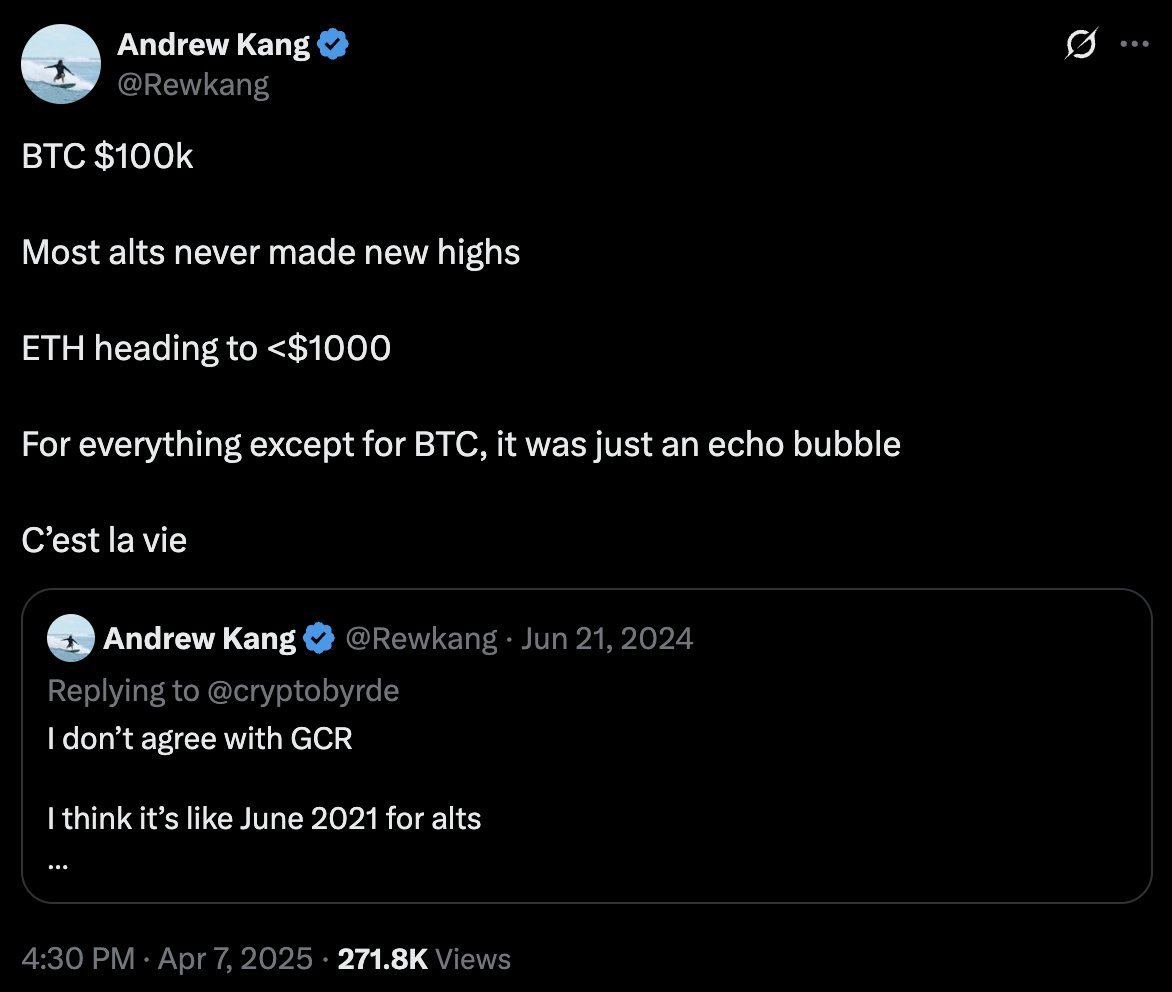
Below is the original content by Andrew Kang, translated by Odaily Planet Daily.
Among the financial analyst articles I have read recently, Tom Lee's ETH theory is arguably "one of the dumbest." Let's analyze his points one by one. Tom Lee's theory is mainly based on the following key points.
Adoption of stablecoins and RWA (real-world assets);
The "digital oil" analogy;
Institutions will buy and stake ETH, providing security for the network where their assets are tokenized, as well as serving as operating capital;
ETH will equal the total value of all financial infrastructure companies;
Technical analysis;
1. Adoption of Stablecoins and RWA
Tom Lee's argument suggests that the increase in stablecoins and asset tokenization activities will boost trading volume, thereby increasing ETH's transaction fee revenue. On the surface, this seems reasonable, but a few minutes of data research will reveal that this is not the case.
Since 2020, the value of tokenized assets and the trading volume of stablecoins have increased by 100-1000 times. However, Tom Lee fundamentally misunderstands Ethereum's value accumulation mechanism—he leads one to believe that network transaction fees will rise year-on-year, but in reality, Ethereum's fee revenue has remained at 2020 levels.
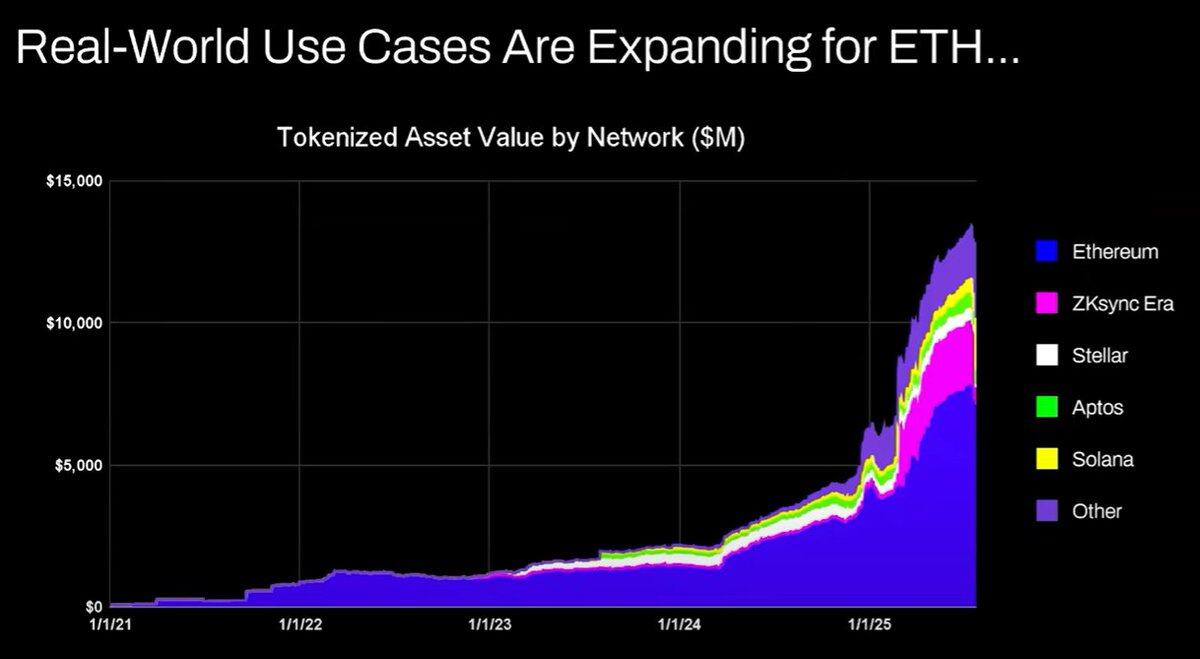
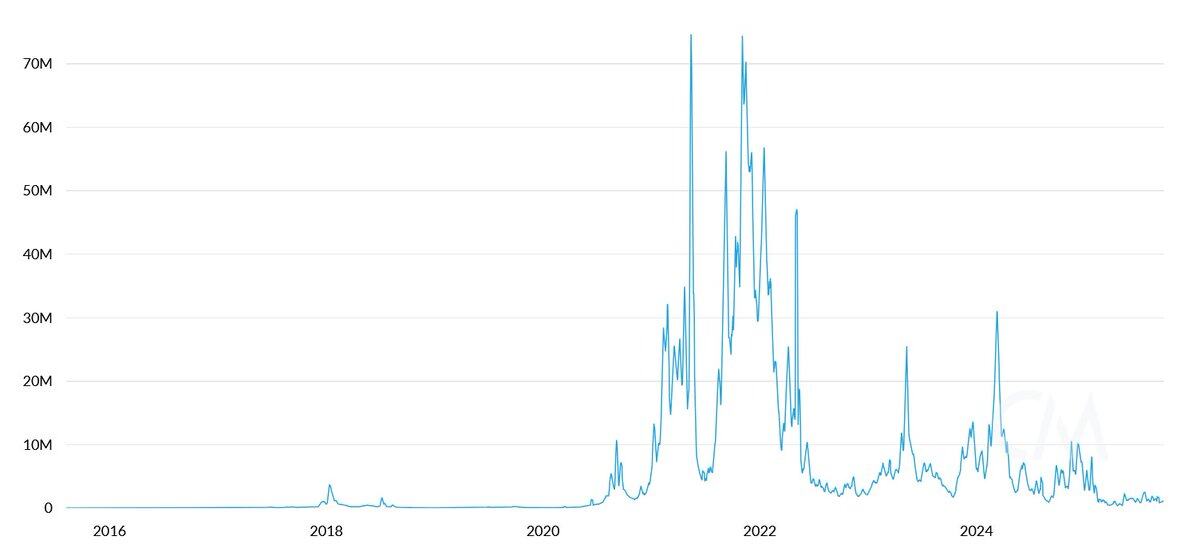
The reasons for this outcome are as follows:
The Ethereum network will improve transaction efficiency through upgrades;
Stablecoins and asset tokenization activities will flow to other public chains;
The transaction fees generated from tokenizing low-liquidity assets are negligible—there is no direct proportional relationship between tokenized value and ETH revenue. People might tokenize a $100 million bond, but if it only trades once every two years, how much fee can it bring to ETH? Perhaps only $0.1, while the fee generated from a single USDT transaction far exceeds this.
You can tokenize assets worth trillions of dollars, but if these assets are not frequently traded, it may only add $100,000 in value to ETH.
Will blockchain trading volume and fees increase? Yes.
However, most fees will be captured by other blockchains with stronger business development teams. In the process of moving traditional financial transactions to the blockchain, other projects have seen this opportunity and are actively capturing the market. Solana, Arbitrum, and Tempo have all achieved some early victories, and even Tether is supporting two new stablecoin public chains (Plasma and Stable), hoping to shift USDT trading volume to their own chains.
2. The "Digital Oil" Analogy
Oil is essentially a commodity. The real price of oil, adjusted for inflation, has remained within the same range for a century, occasionally fluctuating and then returning to its original position.
I partially agree with Tom Lee's view that ETH can be seen as a commodity, but that does not imply a bullish outlook. I am not quite sure what Tom Lee is trying to express here.
3. Institutions Will Buy and Stake ETH, Providing Security for the Network and Serving as Operating Capital
Have large banks and other financial institutions already bought ETH to include on their balance sheets? No.
Do they have plans to announce the purchase of ETH? No.
Will banks hoard barrels of gasoline because they keep paying energy costs? No, the costs are not significant enough; they will only pay when needed.
Will banks buy shares of the asset custody institutions they use? No.
4. ETH Will Equal the Total Value of All Financial Infrastructure Companies
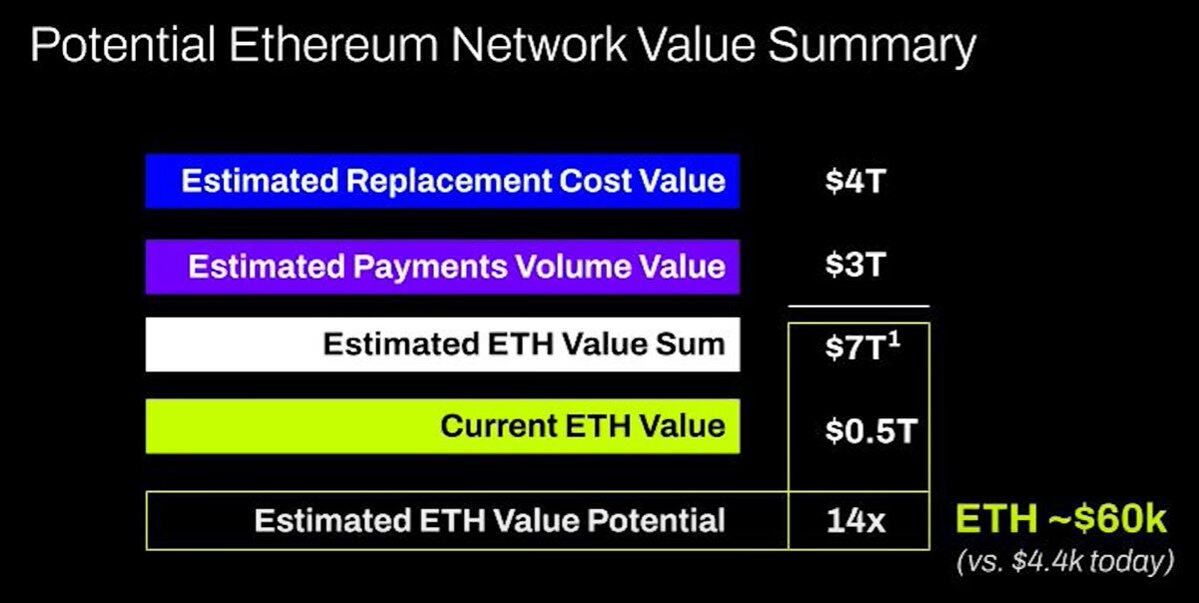
I am truly speechless. This is yet another fundamental misunderstanding of value accumulation, pure fantasy, and I can't even be bothered to criticize it.
5. Technical Analysis
In fact, I personally enjoy technical analysis and believe that when viewed objectively, it can provide a lot of valuable information. Unfortunately, Tom Lee seems to be misusing technical analysis to draw arbitrary lines to support his biases.
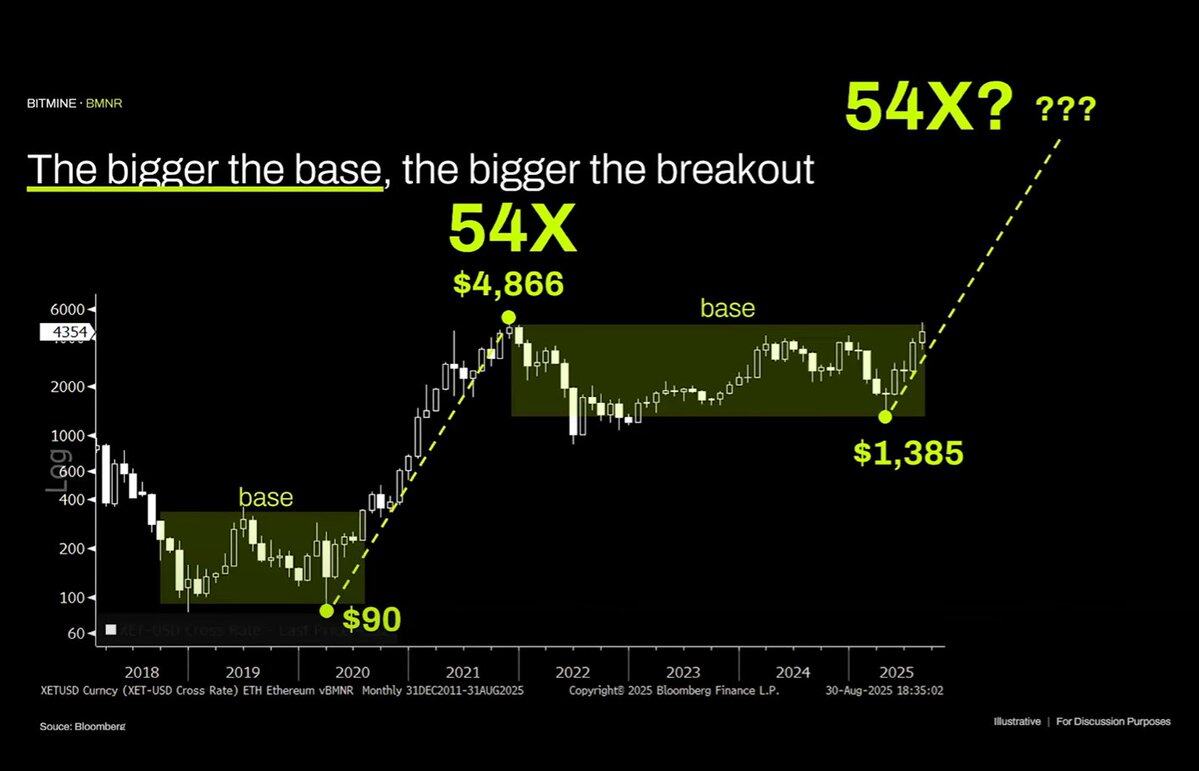
Objectively examining this chart, the most obvious feature is that ETH has been in a prolonged range for several years—this is no different from the wide-ranging fluctuations in oil prices over the past thirty years—merely oscillating within a range, and recently it has failed to break through resistance after testing the upper range. From a technical perspective, ETH actually shows bearish signals, and we cannot rule out the possibility of it oscillating in the long term between $1,000 and $4,800.
Just because an asset has experienced parabolic rises in the past does not mean that this trend will continue indefinitely.
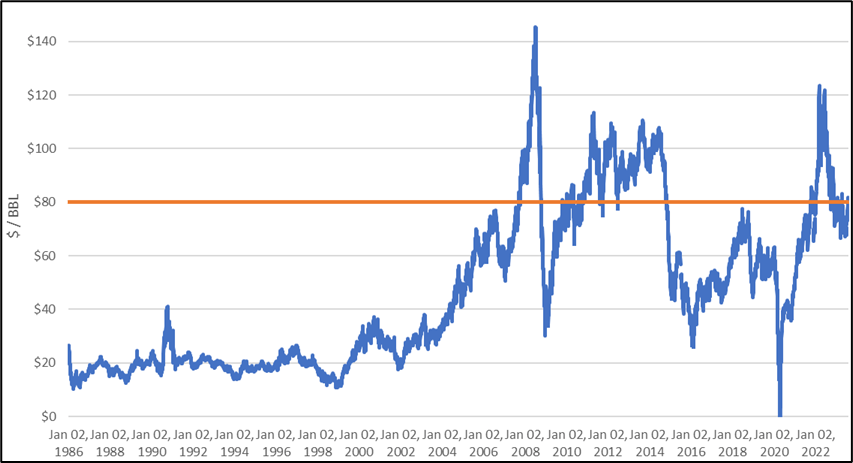
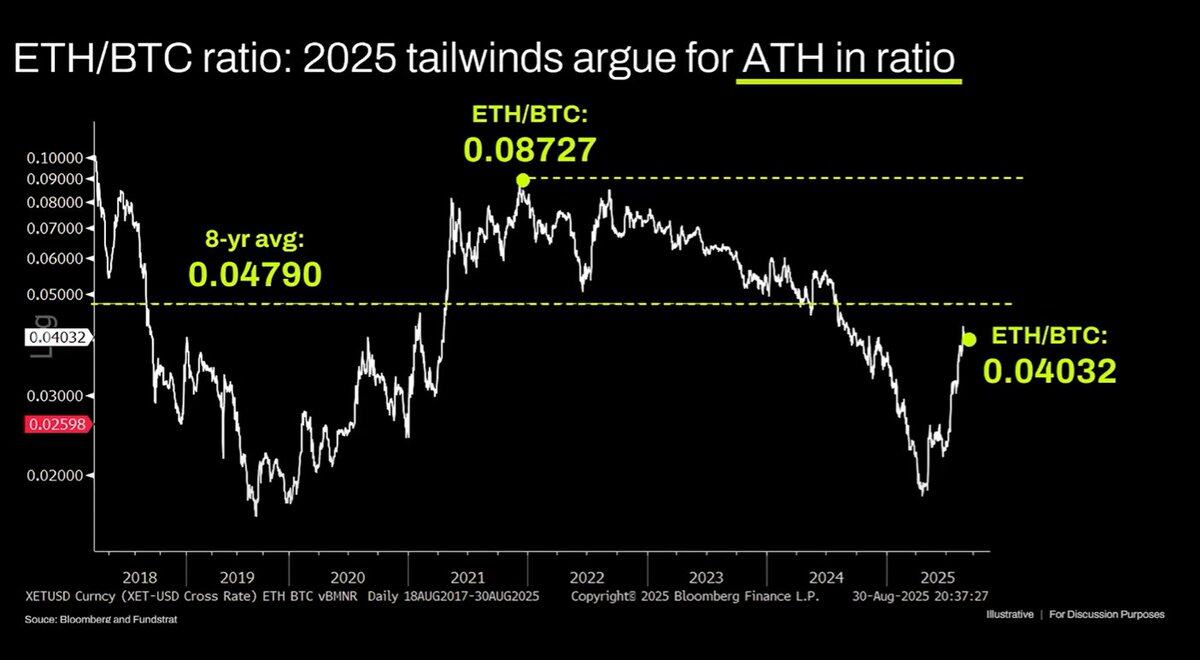
The long-term ETH/BTC chart is also misread; although it is indeed in a multi-year range, it has been constrained by a downward trend over the past three years, with the recent rebound only reaching long-term support. This downward trend stems from the saturation of Ethereum's narrative, and the fundamentals cannot support valuation growth. These fundamental factors have not undergone substantial changes to date.
The valuation of Ethereum is essentially a product of a lack of financial cognition. Fairly speaking, this cognitive bias can indeed support a considerable market value (see XRP), but its support is not infinite. Macro liquidity has temporarily maintained the market cap of ETH, but unless significant structural changes occur, it is likely to fall into a prolonged period of underperformance.
免责声明:本文章仅代表作者个人观点,不代表本平台的立场和观点。本文章仅供信息分享,不构成对任何人的任何投资建议。用户与作者之间的任何争议,与本平台无关。如网页中刊载的文章或图片涉及侵权,请提供相关的权利证明和身份证明发送邮件到support@aicoin.com,本平台相关工作人员将会进行核查。




